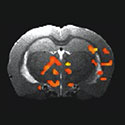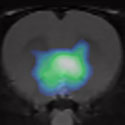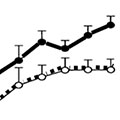Hot Off the Press – April 12, 2019. NIDA-funded scientists have just published findings in the journal Science showing the development of a new, groundbreaking chemogenetics technology for modulating brain function in a remote, precise and ultra-sensitive manner in living subjects. These findings describe new chemogenetic ion channels for neuron activation and silencing that are controlled by… [Read More]
Hot off the Press
Heroin addiction engages negative emotional learning brain circuits in rats
Hot Off the Press – April 8, 2019. The United States is amid an unprecedented opioid epidemic. From 2002 through 2016, the number of heroin users increased by 135% and the number of deaths attributable to heroin increased by 533%. Therefore, there is an urgent need for research into the neurobiology of opioid use disorder… [Read More]
Opioid-galanin receptor heteromers mediate the dopaminergic effects of opioids
Hot Off the Press – April 1, 2019. Identifying non-addictive opioid medications is a high priority in medical sciences, but μ-opioid receptors mediate both the analgesic and addictive effects of opioids. We found a significant pharmacodynamic difference between morphine and methadone that is determined entirely by heteromerization of μ-opioid receptors with galanin Gal1 receptors, rendering… [Read More]
A deeper insight into how GABA-B receptor agonism via baclofen may affect alcohol seeking and consumption: lessons learned from a human laboratory investigation.
Hot Off the Press – January 29, 2019. The GABA-B receptor agonist baclofen has been investigated and used as a treatment for alcohol use disorder, but data from clinical studies remain inconsistent. Additional research is needed to understand the biobehavioral mechanisms underlying baclofen’s effect in relation to alcohol use. In the present study, thirty-four alcohol-dependent… [Read More]
Genetic deletion of vesicular glutamate transporter in dopamine neurons increases vulnerability to MPTP-induced neurotoxicity in mice.
Hot Off the Press – November 29, 2018. The neural mechanisms underlying dopamine neuron degeneration in Parkinson’s disease are largely unknown. In this study, we found that selective deletion of a vesicular glutamate transporter (VgluT2) in dopamine neurons led to a significant increase in dopamine neuron toxicity to the neurotoxin MPTP via a BDNF-dependent mechanism,… [Read More]
Volitional social interaction prevents drug addiction in rat models.
Hot Off the Press – November 19, 2018. A new study published in Nature Neuroscience finds that social interactions can have a profound effect on behaviors related to addiction, and on the brain’s response to drug-associated cues. These findings have implications for people with substance use disorders (SUDs), because it suggests that social interaction can… [Read More]
Cocaine reward is reduced by decreased expression of receptor-type protein tyrosine phosphatase D (PTPRD) and by a novel PTPRD antagonist.
Hot Off the Press – October 25, 2018. There are currently no effective medications available for the treatment of psychostimulant addiction. Receptor-type protein tyrosine phosphatase D (PTPRD) is a neuronal cell-adhesion molecule that has been associated with psychostimulant addiction in humans. In this research, we found that PTPRD gene mutation significantly reduced vulnerability to cocaine… [Read More]
Distinct and Dynamic ON and OFF Neural Ensembles in the Prefrontal Cortex Code Social Exploration.
Hot Off the Press – October 10, 2018. Using miniature fluorescence microscopes (miniScope) via an implanted optical microprobe, Liang and Zhang et. al. were able to record the calcium activity from hundreds of nerve cells in medial prefrontal cortex (mPFC) when the mice freely engaged in social exploration. They track the activity of the same… [Read More]
Evidence for functional pre-coupled complexes of receptor heteromers and adenylyl cyclase
Hot Off the Press – March 28, 2018. Scientists at the National Institute on Drug Abuse (NIDA) Intramural Research Program (IRP) have uncovered evidence that shows a more complex and elaborate role for the body’s hard-working G protein-coupled receptors (GPCRs) than previously thought, suggesting a conceptual advance in the fields of biochemistry and pharmacology. With… [Read More]
Gs- versus Golf-dependent functional selectivity mediated by the dopamine D1 receptor.
Hot Off the Press – February 15, 2018. The two highly homologous subtypes of stimulatory G proteins Gαs (Gs) and Gαolf (Golf) display contrasting expression patterns in the brain. Golf is predominant in the striatum, while Gs is predominant in the cortex. Yet, little is known about their functional distinctions. The dopamineD1 receptor (D1R) couples to Gs/olf and is highly expressed in cortical… [Read More]










